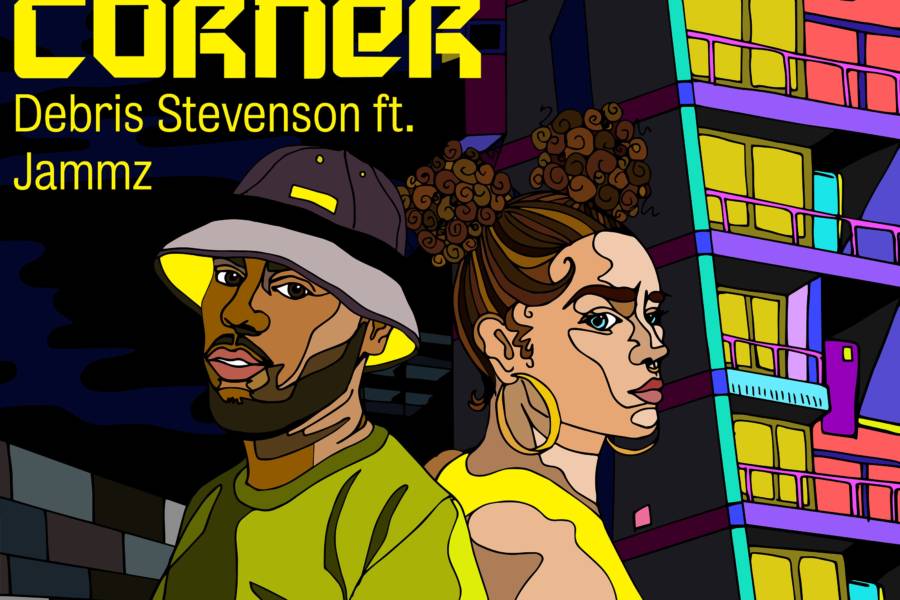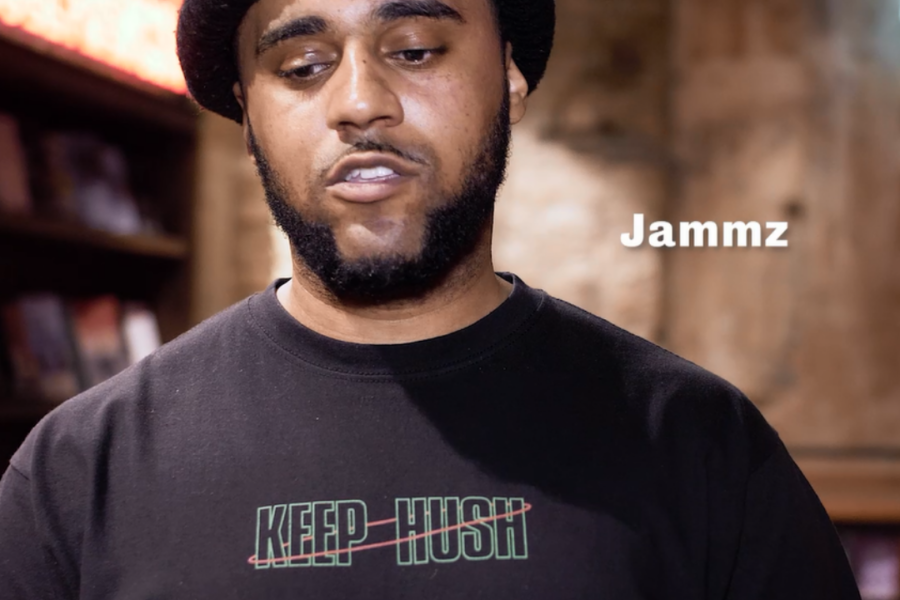Poet in da Corner: Writing the show
Published on Tue 18 Feb 2020Poet in da Corner is inspired by Dizzee Rascal’s seminal album, Boy in da Corner and is an experience that lives on stage, on the page, and through the album. In part three of our blog series with Debris Stevenson and Jammz, we talk about writing the lyrics and rhymes for Poet in da Corner.
From following Dizzee’s rhyme schemes to sharing your story, the act of writing the show is an amazing and highly technical feat. Why does that feel so important in Poet in da Corner?
Debris: Let’s take the process that you take poems through in academia. I remember, Charlie Dark, an amazing poet, producer, runner of Run Dem Crew, and a good mentor of both Jammz and I, he’s the reason we know each other actually, he said to me “People don’t rate grime MCs, but to spit lyrics that you’ve written and spit them that fast, with cameras and people in your face, the track could change at any minute… that is so hard!” Grime really taught me more about poetry than my two degrees ever did. I didn’t understand iambic pentameter and metre for so long, and then I was like flow. It’s just flow. You know? It’s genius, and to do that with no resources and just from initiative – how old was Dizzee when he was writing Boy in da Corner? 17? He was a kid, and so many of the people that invented this genre were kids. For that not to be given the same notoriety as poets and writers that we study seems baffling. You know, it’s like this massive art form that’s come out of this country. Yet we’re not studying it on a writing level. Surely if you want to get kids into writing, if you want to get kids into poetry, it’s a great way to do that. But you know, obviously, a lot of the time for a number of prejudicial reasons the media is saying other things about grime. So, it was really important for us for this to be a very celebratory piece that broke down a lot of those stereotypes.
What about the lyrical action and the way you wrote the rhymes?
D: We had a lot of conversations about that like, which are the tracks that you sit down and really listen to? Which are the tracks that make you bop? Which are the ones that live in the body and make people want to get up? Which are the ones that might not work as well on the album as they do live? Different tunes function in different ways. Like Doom is really a story you listen to or witness and then you’ve got tunes like Fix Up Look Sharp – “Hear The Bang, See The Spark” which is actually just a vibe.
So these tracks and this play weren’t just written for the stage, they were never just meant to be limited and exist as one thing?
D: Nothing I write is ever just one thing. My writing is a bath bomb – many different things wrapped very very tightly into an orb – anticipating explosion on contact.
Do you write to serve the character and how they’re feeling, or do you write to serve the story?
D: I knew that I wanted Poet in da Corner to change the perception of grime, but I didn’t know what the story was. So, I kind of had to understand what my story was. Once I knew the rough story of it, then we could start being a bit more specific about the intentions of the characters. I remember when we did it last time, I would get a bit defensive (but I wouldn’t say that back then) about my character because it’s me, but now I really don’t care. I’ve definitely got to a point where I understand that who I’m playing is a characterised version of myself, and if I’m given an intention by Ola, or if I need to make an edit, I understand that it’s for the best of the play and it’s nothing to do with who I am. So yeah, I think it started with what I wanted to say.
Jammz: I’d say the same to be honest. When I joined the process, the story wasn’t 100% finished. So I was literally having to follow what was happening in the scene. How do I communicate that as a grime MC in lyrics? Obviously, the deeper we got into the process, I started to understand my character more and I could be a lot more in depth with what I was saying, and have a lot more intention, so that developed over time. So it started off with what’s happening in the scene and then moved on to what is the intention of the character, and how does that person feel.
Read the rest of the blog series: Part 1, Part 2, and Part 4.

Listen to the music from Poet in da Corner
on Spotify
Step into a technicolour world where music, dance and spoken word collide, and discover how grime allowed Debris Stevenson to redefine herself.
Listen to Poet in da Corner
Poet in da Corner on tour
Feb - Mar 2020
Poet in da Corner goes on tour to MAC Belfast, Leicester Curve, Birmingham Rep, Nottingham Playhouse, HOME Manchester, and Hackney Empire.
Find out more
Poet in da Corner | What can audiences expect
“Poet in da Corner will change your experience of theatre.”
Watch now